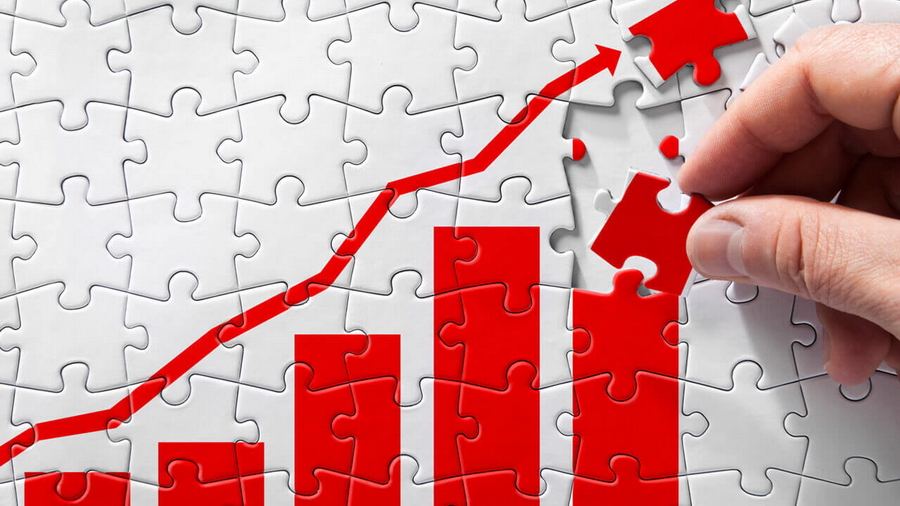
In 2022, China consolidated its status as the world’s second-biggest economy, with an economic output surpassing 120 trillion yuan, or around $18 trillion at the average annual exchange rate. China’s per capita GDP reached 85,698 yuan, which translates to nearly $13,000, an increase of 3 percent in real terms over the previous year. Foreign trade grew by 7.7 percent for the year, making a significant contribution to economic growth. Against the backdrop of elevated global inflation, China’s CPI rose by only 2 percent.
These achievements did not come easily. They are mainly due to a package of policies to stabilize the macro economy and hedge against an array of risks. Looking ahead to 2023, the markets generally foresee downward pressure in the global economy, but the Chinese economy will buck the trend and continue to grow.
Yet, the foundation underpinning China’s economic recovery is not solid, given the triple pressure of shrinking demand, supply shocks and weakened expectations. In particular, the softening of global growth will create drag on external demand, thus denting China’s export expansion.
At the same time, China’s economic recovery will boost imports, so the pulling effect of foreign trade surpluses on economic growth will moderate significantly. This dictates that domestic demand must take up the slack in order to achieve stable economic growth. The Central Economic Work Conference in 2022 put domestic demand front and center on the agenda for the new year, stressing the priority of restoring and expanding consumption.
Comparatively speaking, investment is more effective for driving economic growth, but it comes with its share of side effects. Consumption is a slow variable that requires sustained effort to yield a boost. In recent years, consumption has become an important engine for China’s economic development. In 2021, for example, the contribution of final consumption expenditures to overall economic growth reached 65.4 percent. However, the COVID-19 pandemic punched holes in people’s income growth and rattled expectations. They became unwilling or unable to spend, and turned to favor saving their money to hedge against risks.
To restore and expand consumption, strong measures must be undertaken to enhance consumption capacity, improve consumption conditions and foster consumption scenarios. In tandem, the income of urban and rural residents should be expanded through multiple channels, with a focus on supporting housing improvements, purchases of new-energy vehicles and access to care services for the elderly. In the medium to long term, priority should be given to breaking down institutional barriers that restrict domestic demand.
As things stand now, we can see some prominent problems that need to be addressed, such as the significant growth in residential savings, wide divergence in incomes and insufficient spending power in the middle and lower income groups. In addition, housing properties account for a high proportion of residents’ total assets, and the wealth effect and crowd-out effect brought about by housing price fluctuations are both significant.
In the new year, the key to expanding consumption lies in increasing people’s incomes. On one hand, it is imperative to optimize the initial distribution pattern and improve redistribution mechanisms. At the same time, it is important to tap tertiary distribution to catapult more low-income people into the middle-income ranks.
In the short term, we could resort to bolstering supply to meet the diverse needs of residents in the traditional segments of consumption — clothing, food, housing and transportation. In addition, the government could issue consumption vouchers and cash subsidies, boost online and offline consumption and encourage e-commerce platforms to design electronic consumption vouchers to amplify the pulling effect of consumption.
From the perspective of economic development, supply and demand are inextricably linked, and supply-side structural reform is also an important step toward achieving high-quality development. When supply and demand form a virtuous cycle, the endogenous impetus for growth will be released sustainably.
To deliver on the strategy of expanding domestic demand, it is vital to foster an integrated and organic chain. Specifically, there should be a closed-loop chain that starts with production and goes through distribution, circulation, consumption and investment for reproduction.
Clearly, investment is not only an important component of domestic demand but is also the key to economic growth. In this regard, private investment is a key force to achieving strong endogenous growth in the Chinese economy. Over the past few years, the confidence of some private enterprises has been shaken by multiple factors.
Both State-owned and private enterprises have a distinct role to play in promoting the smooth operation of China’s economy and improving the quality of economic development. The first priority for the private sector is to boost confidence. In this regard, the government could roll out guiding policies to support the development of small, medium and micro enterprises in areas such as green finance, tech innovation and high precision and advanced products. Policies should be appropriately tilted toward private enterprises, guiding their investments to pivot toward low-carbon and high-tech.
Looking forward, we should focus on addressing weaknesses in industrial chains, improving the quality of supply, constantly optimizing the investment structure, improving investment efficiency and vigorously stimulating private investment to generate lasting momentum for investment.
